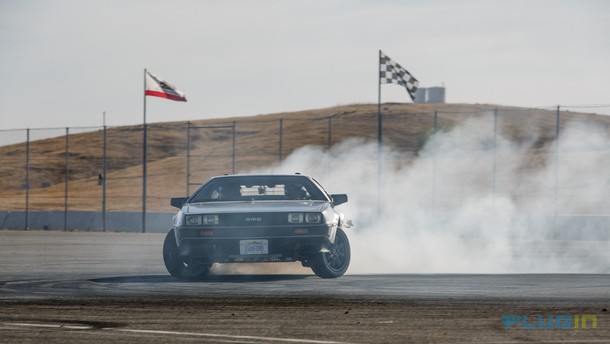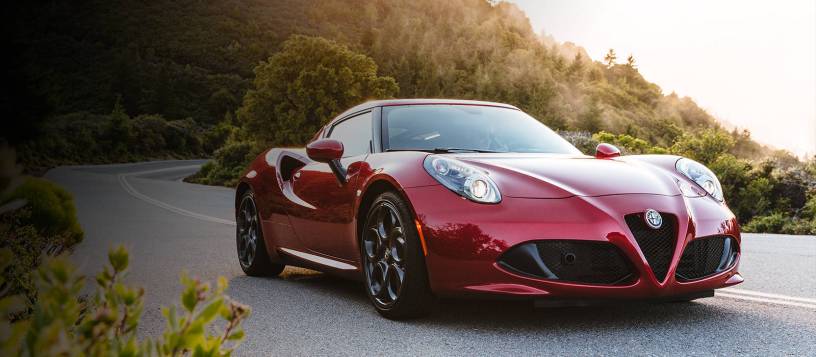Very nearly every modern production car will come with a power assisted steering system. Power assisted steering allows you to easily maneuver your car at low speeds when you’re parking, in traffic, etc. You can still find some small sports cars like the Alfa Romeo 4C and the Lotus Elise with manual steering, but both of these cars weigh well under 3,000 lbs. and are focused solely on driving pleasure. Large utility vehicles, luxury cars and SUVs have heavily assisted steering systems. This adds to the luxury feel of some cars, as you do not need to work as hard to maneuver the car, and this design proves itself to be essential in heavier vehicles that would render themselves almost impossible to move in low speed scenarios.
So, why not heavily assist all steering systems? Power steering, for the most part, plays a necessary role in day-to-day drivability and comfort of cars. It can add safety and convenience, but it does come with its drawbacks. This is especially of note when looking at cars that are designed to “connect” you to the road and are designed for the man or woman that enjoys the thrill of driving. Power steering systems intrinsically separate you from overall direct control of the car in that they have predetermined parameters that will amplify your movements and leave you not fully in control of the movement you car’s wheels. Of course, there are some very good steering systems that are very predictable, precise and allow you to easily control your car while providing you with a more than adequate amount of information about how your car is behaving. However, I am not writing this to discuss the decent steering systems. I am writing to debate the prevalence of newer assist systems and the future role they will play in assisting the modern day driving enthusiast.
There are two principle types of power assist systems 1) Hydraulic Power Assist 2) Electric Power assist. Hydraulic power assisted steering tends to be the favorite amongst driving enthusiasts because while it is not entirely mechanical like the steering system in the Lotus Elise, it is a more natural system than the artificially calibrated electric power assisted steering rack.
Hydraulic power assisted steering uses a belt driven hydraulic pump to augment the torque you apply to the steering wheel and allow you to move the wheels more easily. This hydraulic pump is consistent and natural steering feel will often be aided by a small hydraulic pump working against the driver’s inputs, at high speeds. To provides a feeling of resistance that is understood, by the driver, as a more organic feeling. It is generally accepted that hydraulic power steering systems are the better steering system for the driving enthusiast and translate to a more pleasurable driving experience, yet they are falling out of favor rapidly.
Electric power steering systems are now replacing the once prevalent hydraulic power assisted systems. Car enthusiasts and automotive journalists alike are lamenting the loss of the hydraulic system and for good reason. The advent of the electric power steering system represents everything that someone who loves cars will hate. Electric steering systems are not belt driven and therefore are not a drain on the engine and can consequently yield a whopping ~1 MPG greater fuel economy than their hydraulic counterparts. This system also gives the option, in the future, of a steer by wire system that would allow for no mechanical connection from the steering wheel to the front wheels at all. This would allow for the elimination of the steering column, which, in the eyes of an automotive engineer, is a massive safety hazard and inconvenience to design around. Not to mention this eliminates the cumbersome hydraulic pump, belt, hydraulic lines and all of the maintenance and production expenses that can, unfortunately, go hand in hand with the more archaic hydraulic system.
This system also allows for more electronic stability control to aid the driver in the case of, what the car perceives as, the driver losing control. This is a huge advancement in car safety and autonomous driving, but much to my chagrin the car perceives any wheel spin, slide, etc. as an out of control activity and can quickly ruin any fun the driver might be having.

Above: MARTY the autonomously drifting car designed at Stanford University
Yet, for all of these downsides the worst of all is that electric power steering can be tailored infinitely. This is a problem because a computer engineer must design an algorithm that tells the car how to handle a driver’s inputs. This means that the car is constantly trying to predict what you are asking from it and will inherently get things wrong. So, precision will not be as good. Secondly, tailoring the system means the electric motor can and will dampen the feeling of the road, decreasing the response the driver feels from the steering wheel. The steering wheel cannot adequately communicate to the driver what the tires are doing on the road. This is the largest complaint from automotive journalists who spend their careers driving every car mainstream manufacturers have to offer. They complain of imprecision and more than anything a “numb,” non-communicative feeling.
Luckily, for all of the negative press surrounding electric power assisted steering it is getting much, much better. Like early voice recognition software, electric power assisted steering started off as a frustrating, ill equipped system that was not heavily used and was not well received. However, as time has gone on the advantages of the system have become clear and the design has become much better. We’ve learned to love Siri and even beloved sports cars like the Porsche 911 have embraced change and have been fitted with electric power steering systems. The newer systems have clear advantages for safety and fuel economy. It is also becoming more and more evident that autonomous driving is the way the automotive industry is moving and “steer by wire” will play a huge role in the development of autonomous transportation, so perhaps we should give them a chance. Will they ever be as good as manual steering? We will have to wait and see.


Intersting article… Have to share!
LikeLike
I am ordering a Boxster 718S and this is the question I had about Power Steering Plus (PSP): Is the extra convenience of easy turning at low speed (<31mph, which isn't THAT low, in my opinion) a fair trade for less road-feel, especially in a light car like a Boxster? The salesman (well-known to me and very trustworthy) says go with the PSP (its about $250, not the most expensive option on this car). Other blogs say PSP can be turned off by the dealer if you don't like it. I am not sure if the difference with/without PSP will even be that noticeable. Maybe it is more of a psychological issue (Look Ma! No PSP!!) than a real performance issue.
LikeLiked by 1 person
This is Porsche’s second iteration of the electric power steering assist. Their first attempt in the boxster was with the 981 generation of the cayman / boxster chassis. This is the generation that lead to the new 718 boxster. This steering was received well, but the new and improved steering system has received amazing reviews and I don’t think you will regret the upgrade to PSP. However, this depends on the type of comfort you’re ultimately looking for. Their system has shown itself to do a good job of not being intrusive, but helping out with low speed maneuvering. Many of the forums I’ve looked through have said that the difference in steering feel is very subtle and some have said it’s almost unnoticeable. Ultimately, the only way to decide whether you need it is to test a boxster with manual steering, but I’m not sure the dealership will have many in stock. It is my understanding that a huge percentage of their inventory comes with PSP.
Thanks for the comment!
LikeLike
As an enthusiast of manual shift cars, I have often experienced the feeling of almost becoming a part of the machine itself as I navigated the roadway. Hills, curves and straight stretches absorbed my attention completely, and the experience of being in the moment are missing in the luxury rides you discuss in this column on steering.
While I appreciate the advances in automotive engineering in the recent past, I lament the distance the have created between the driver and his automobile.
LikeLike